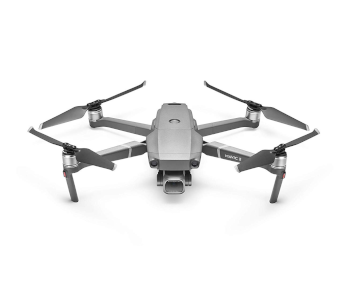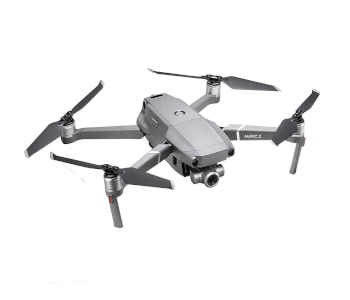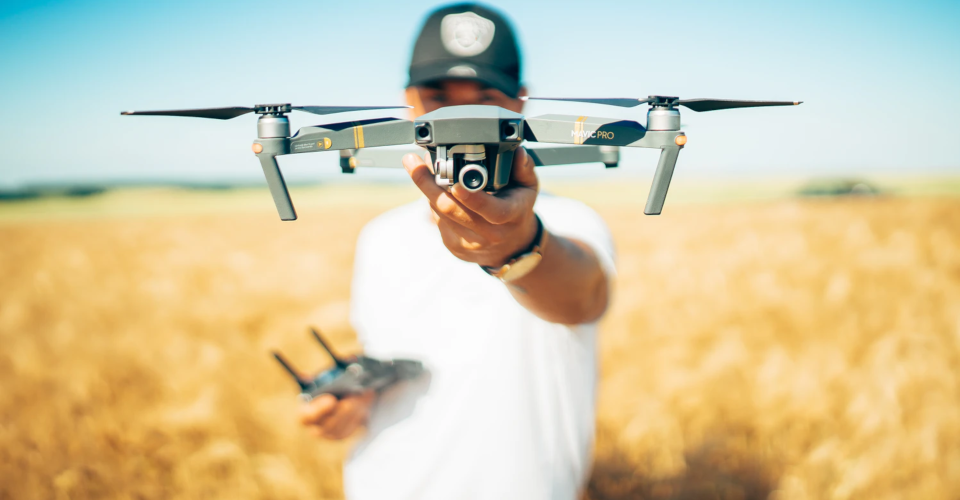What is Active Track 2.0?
A good camera drone doesn’t just have a high-resolution camera. It also needs a host of camera features and automatic camera modes that complement its camera’s abilities. After all, having to fly a drone and frame shots simultaneously is an almost impossible task.
One of the most highly demanded and useful camera modes is what is widely known as a “Follow Me” mode. DJI’s latest drones come with this feature under the name “Active Track 2.0”. How does Active Track 2.0 work and what can it do? How does it compare to the older version of Active Track?
A bit of history: the original DJI Active Track
“Active Track” is the name that DJI has given their native Follow Me feature. The original Active Track featured debuted with the Phantom 4 back in 2016 and was then adopted in the later Spark, Mavic Pro, and Phantom 4 Pro drones. The same technology was integrated into the DJI Osmo line of handheld gimbals.
Active Track works by using the camera’s visual sensors to identify the subject and differentiate it from the background. To use the feature, you will have to draw a box around the subject to be tracked. The major limitation of this technology is that your subject needs to have very good contrast with the background so that the camera’s visual sensors will not lose track of it.
Another challenge that the original Active Track ran into often is that it has difficulty continuing to track a subject should it get obscured when it moves behind trees or other obstacles.
Despite the limitations, the original Active Track served DJI well for at least two years’ worth of their camera drone and handheld gimbal products.
What is Active Track 2.0?

In 2018, DJI launched the upgraded Active Track 2.0 feature along with the next generation Mavic drones, the Mavic 2 Pro, and the Mavic 2 Zoom. Boasting of smarter features, Active Track 2.0 sought to address the limitations of the first Active Track and usher in a new era of subject-tracking potential for their camera drones.
Instead of using a single optical sensor, Active Track 2.0 combined the capabilities of the drone’s main camera and two forward optical sensors. This allows the drone to create a 3D map of its environment, identifying both the subject and any potential obstacles. This is quite similar to how the Intel RealSense system that Yuneec uses for their drones’ obstacle avoidance, although we imagine there are key differences in how they are implemented.
Active Track 2.0 also has an AI-powered capability that predicts the trajectory of the subject being tracked, giving it more of a leeway should the subject move out of visibility. Using the same logic, the 3D environment created by Active Track 2.0 also allows the drone to plan a flight path that will keep it clear of all obstacles while still keeping track of the subject.
One other major advantage of the newer Mavic 2 drones is that they are capable of higher top speeds, allowing them to keep track of their subjects easier. Whether it’s a bike on a trail or car driving down the freeway, the powerful combination of DJI’s latest drones and the new ActiveTrack 2.0 feature should help create more aerial filmmaking opportunities.
Active Track 2.0 Modes
The Active Track 2.0 feature offers three modes, which are the same ones that were included in the original Active Track mode. However, the added capabilities make each one of these modes just a little better.
1. Profile
Profile Mode is the most “conservative” Active Track 2.0 mode. In this mode, the drone maintains a constant distance and angle from the subject while continuing to track the subject’s movement. You can let the drone fly automatically in this mode. As the name implies, the best way to use Profile Mode is to have the drone fly side-by-side with the subject from a safe distance.
2. Trace
In Trace Mode, the drone maintains a constant distance from the subject while tracking. This gives you a bit of freedom to fly the drone around the subject in a circle while the drone automatically maintains the set distance even while the subject is moving.
3. Spotlight

Spotlight Mode is the Active Track 2.0 mode that requires the greatest degree of user input. In Spotlight Mode, the drone’s camera maintains focus on the subject but does not perform any automatic flight maneuvers. Instead, you have the freedom to fly the drone any way you want while the camera remains fixed on the subject. The sole limitation is that your drone’s yaw movements are restricted. Spotlight Mode gives you the room to come up with highly creative and fully customized videos, although it’s a bit more demanding of your piloting input.
The zoom feature of the Mavic 2 Zoom can be used with any of the Active Track 2.0 modes. This means that you can zoom in and out on your subject at any time, bypassing the distance limitations set by both Profile and Trace modes. It also adds another avenue of customization when filming in Spotlight Mode.
Tips when using Active Track 2.0
Despite all the improvements that DJI has made with Active Track 2.0, it’s still not an absolutely perfect tracking feature. You can still lose subjects with it, especially if they become hidden from the camera’s sensors for a long time. The feature also runs into difficulty when the subject gets too close, so having the drone positioning in a manner where the subject moves towards it is probably a bad idea. Here are some other useful tips when using the new and improved Active Track 2.0:
1. Decide if you need obstacle avoidance
The Mavic 2 drones may fly at a max horizontal speed of 72 kph or around 20 m/s, but the drone’s obstacle avoidance system is automatically deactivated at these speeds. If you want to fly with obstacle detection, you will have to activate Active Track 2.0 under Safe Mode.
In Safe Mode, the drone’s speed is capped at only 12 m/s or around 43 kph. While this is probably fast enough to keep pace with someone on a biking trail, keeping track of a moving car may be a bit challenging. Thus, this is a choice you need to make in the context of how fast you expect your subject to be moving.
2. Use Active Track on stationary subjects
The Active Track 2.0 feature may be designed especially for keeping track of moving subjects, but you can also change things up a bit and use it for a subject that’s purely stationary. It doesn’t even have to be a person or a vehicle – even a building or a geological formation would make an excellent subject. Assign the building as the subject and have your drone fly around it at a constant distance for purely cinematic footage that is so much better than any number of shots taken from the ground.
3. Don’t’ forget to set an RTH location
When capturing those amazing shots with Active Track 2.0, it’s easy to forget that your drone also has limitations. One of these is the fact that your drone can’t fly indefinitely far from the remote controller without suffering a drop in signal quality. Should the communication between the controller and the drone get completely cut off, then the drone’s RTH feature will kick in and fly the drone back towards the set home point.
You can either set the location of the remote controller or the original take-off point as the RTH home point. This will depend on whether you intended to keep moving as the drone kept track of the subject. Just don’t forget what setting you put in – you wouldn’t want to lose track of your drone, but you don’t want it landing in an unideal spot, either.
An even better alternative: the Skydio R1 drone
DJI has made huge strides with Active Track 2.0, but their tracking feature is still way behind the best tracking drone in the market today – the Skydio R1. The R1 uses an array of six cameras with sophisticated hardware and software to create what the developers call a “Voxel View.” This allows the drone to create a 3D representation of its surroundings at accuracy and scope much greater than DJI’s Active Track 2.0.
Various demo videos have shown the potential of the Skydio R1 to navigate through tight spaces and closely clustered obstacles to track its subject. The 3D modeling process happens continuously – according to a demo, a 6-minute flight of the R1 resulted in the creation of 17 GB worth of data.
Launched in 2018, the Skydio R1 was considered a breakthrough in the field of autonomous drone flight. More recently, US-based Skydio has announced the upcoming launch of the Skydio 2 – a drone with a more familiar form factor but has also been equipped with the same technology that has made the R1 so newsworthy. The drone is now available for reservation on the Skydio website.
Final thoughts
Getting your drone to identify a subject and follow it around is one of the most fun things you can do in drone flight. This technology has proven to be very valuable and highly demanded by both commercial filmmakers and hobby drone pilots.
While most mid-range to high-end camera drones available nowadays already offer their own take on the “Follow Me” feature, DJI’s Active Track 2.0 is considered one of the best in the industry. Using an expanded array of optical sensors and complex algorithms, the upgraded Active Track can more readily keep pace with subjects, even if they get momentarily visually obscured. It’s a great feature to play with – just don’t forget to practice the usual safety measures.

